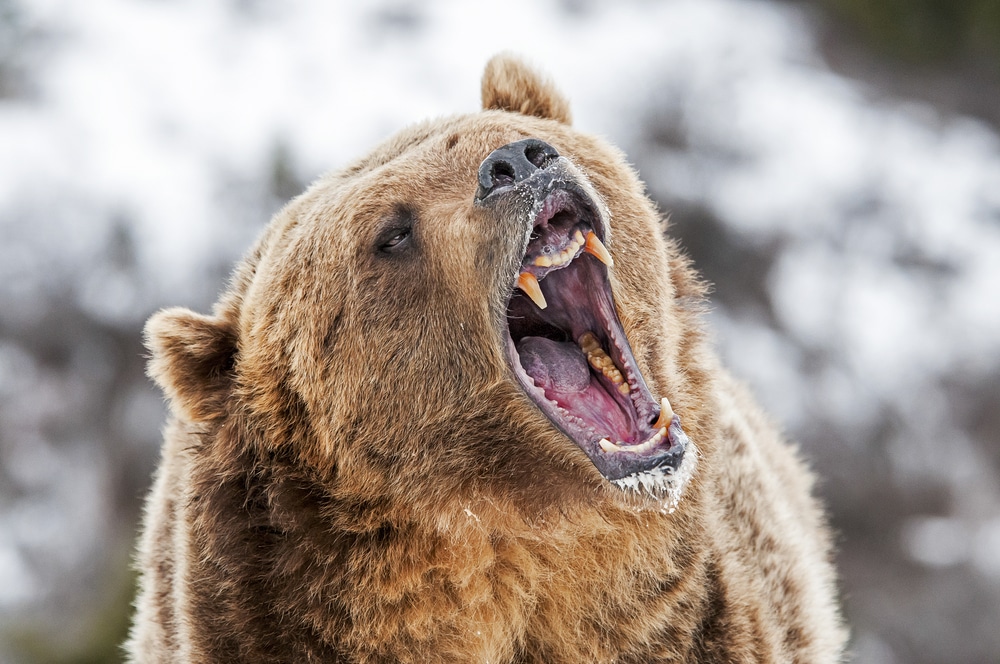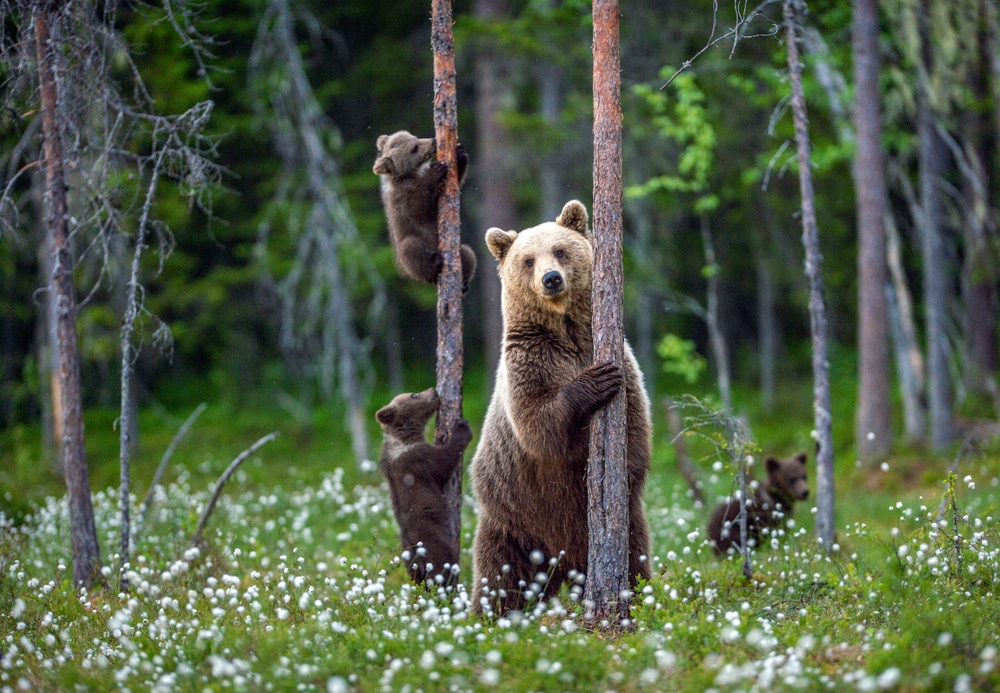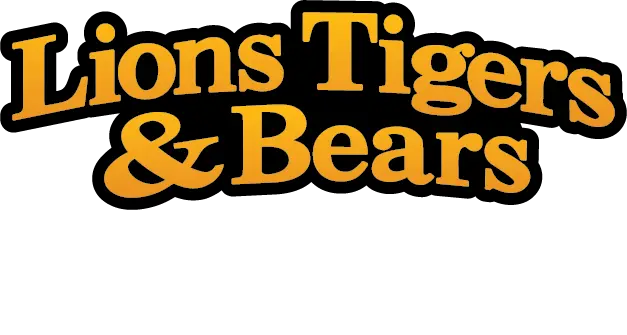
More and more research is shedding new light on animal communication in general and specifically bears. Bears make different sounds and calls to communicate with each other and/or a perceived threat. These sounds can range from chuffing and whimpers to huffs, growls, and moans.
Each of these sounds has a distinct meaning and provides valuable insights into their social structure, emotions, and intentions. This article will provide insights into bear vocalization and decide their meanings. We’ll also explore how understanding these sounds can help in bear research conservation efforts and promote safer human-bear interactions.
Bears don’t make the same sounds. Although there’s some overlap in vocalizations among different ursine species, variations can occur. Here are some examples of how the sounds may differ among various bear species:

Common bear vocalizations, as well as body language, play a crucial role in bear communication, helping these animals convey emotions, intentions, and messages to other bears and potentially humans. Vocalization also helps bears prevent unnecessary conflicts that may waste energy and lead to injuries.
Below, we'll explore various bear vocalizations and what they might signify:
Bears use resonant voices to express strong animal emotions like fear, high anxiety and pleasure. Developing more accurate sound interpretation helps advance our understanding of these amazing creatures. For example, distinguishing the most intense sound during mating or when males fight over a mate. Female bears also make human-like voices when defending their cub from a male.
Growling is often a sign of agitation, anger, or annoyance in bears. When a bear growls, it may be warning another bear or a perceived threat to back off. This vocalization is often accompanied by body language that indicates the bear is ready to attack or defend itself. It's a clear signal of discomfort or aggression.
Huffing is a sound bears make when they are scared. They often huff after running away or climbing a tree. It’s almost in the same context that someone would say, “Whoa, that scared me,” which often happens after stopping retreating.
Similar to squealing, whimpering indicates distress or fear. Bears may whimper when they feel threatened, scared, or cornered. It's a way of signaling submission or vulnerability, especially when confronted by a larger or more dominant bear.
Snorting is a sound that can indicate surprise, curiosity, or mild alarm. Bears may snort when they encounter something unexpected or when they are investigating a new scent or object.
Grunting can be a form of communication between bears, often used during social interactions. It may convey submissiveness or playfulness. Cubs may also grunt when interacting with their mother or siblings during play.
Bears may clack their teeth when scared or afraid. For example, they may blow or clack when startled by someone. But in many cases, this vocalization is not meant to threaten or precede an attack. Bears may also clack their teeth when they scare themselves by neatly falling from a tree.
Roaring is often associated with larger bear species like grizzly bears and brown bears. It's a deep, resonant sound used to communicate over long distances, especially during the mating season or when defending their territory.

Understanding bear vocalizations can significantly aid in bear research, conservation efforts, and improving human-bear interactions.
Bear vocalizations offer a window into their behavior. Researchers can analyze vocal cues to study mating habits, social hierarchies, feeding patterns, and other behavioral aspects, allowing for a more comprehensive understanding of bear ecology.
Vocalizations also make it easy to track and monitor bear populations. Researchers can listen to and record bear sounds to estimate population sizes and distribution. Identifying communication patterns uncovers insights into the health and status of bear populations in specific areas. Additionally, researchers can identify key habitats and breeding areas, which is crucial in conservation efforts.
Conservation authorities and law enforcement can use knowledge of bear vocalizations to detect and deter illegal activities, such as poaching or harassment of bears. Unusual vocalizations, distress calls, or signs of stress can trigger investigations into potential wildlife crimes.
Understanding bear vocalizations can help reduce human-bear conflicts. When people can recognize signs of bear distress or aggression through vocalizations, they can adjust their behavior to minimize potential threats. This can prevent confrontations that might lead to harm for both humans and bears. Awareness also reduces stress on bears and promotes safer encounters.
Educating the public about bear vocalizations is essential for bear safety. Park rangers, outdoor guides, and tourists can benefit from knowing the meaning of different bear sounds. This knowledge can help individuals take appropriate actions when encountering bears in the wild, such as giving the bear space or slowly backing away from an agitated bear.
Studying bear sounds and vocalizations creates conservation insights that can be used to foster a greater appreciation for these animals and their role in ecosystems, and how crucial it is to preserve bear habitats. When people understand that bears use vocalizations to communicate and express emotions, they may be more inclined to support conservation efforts and advocate for bear protection.
Understanding how bears communicate and respond to changing environmental conditions can provide valuable data related to climate change and habitat loss. Changes in bear vocalizations may indicate stress or adaptation to altered landscapes, serving as early warning signs of ecological shifts.
In cases where bears are injured or orphaned, understanding bear vocalizations can help wildlife rehabilitators provide appropriate care. Recognizing distress calls, for example, can ensure timely rescue and treatment for injured bears.
Bear vocalizations are more than just sounds; they are windows into the hearts and minds of these magnificent creatures. They help us comprehend their behavior, social dynamics, and intricate life in their natural habitats. In the realm of conservation, these vocalizations guide our efforts to protect their populations and the ecosystems they call home.
If you wish to actively contribute to the well-being of bears, there is an opportunity to make a difference. At Lions Tigers & Bears (LTB), we’re at the forefront of rescuing and providing care for bears in need. By supporting LTB through donations, you can help ensure that bears receive the care and attention they deserve and that they’re here for generations to come.

Ph: 619.659.8078
Fx: 619.659.8841
[email protected]
24402 Martin Way, Alpine, CA 91901